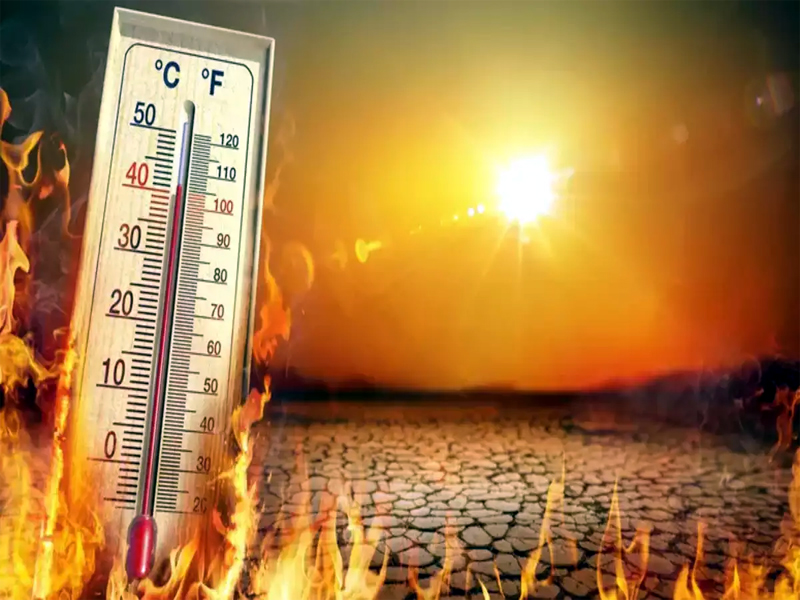A Night Like Never Before: Srinagar Records Its Hottest June Night Ever
Srinagar | 25 June 2025
In a troubling sign of changing climate patterns, Srinagar has just recorded its hottest June night in history, with the mercury refusing to fall below 25°C—a full 8°C above the normal average. This isn’t just a local anomaly; it’s part of a larger pattern of intensifying climate volatility in the Himalayas.
Even Pahalgam, typically known for its refreshing cool evenings, wasn’t spared. It experienced its warmest June night on record, clocking in at 18.8°C.
These nighttime temperatures are significant. Why? Because cool nights offer vital recovery from daytime heat, especially in mountainous regions. The absence of this cooling down indicates that Kashmir’s natural climate buffer is under serious threat.
Rain Brings Temporary Relief—but Not Enough
Following a relentless heatwave, light to moderate rainfall swept through parts of Kashmir including Srinagar, Anantnag, Qazigund, and Kokernag. The rains, which arrived in the early hours, were greeted with collective sighs of relief by residents desperate for a break from the scorching temperatures.
While the showers helped bring daytime temperatures slightly down—hovering between 32–33°C—humidity levels remain high, and the relief is proving to be temporary at best.
Weather Whiplash: A New Climate Reality for Kashmir
The combination of extreme heat followed by unpredictable rainfall is becoming the new norm in Kashmir. According to weather experts, this kind of “weather whiplash” is a signature of climate change in fragile ecosystems like the Himalayas.
Meteorologists from the Indian Meteorological Department (IMD) forecast intermittent rains and thundershowers through the week, with a possibility of heavier downpours in parts of Jammu. But even as rain falls, soil temperatures remain high, aggravating the risk of landslides and flash floods.
What This Means for Kashmir’s Ecology and Public Health
Extreme weather events like this have far-reaching consequences for:
- Agriculture: Heat stress can damage crops like apples, saffron, and paddy that form the backbone of Kashmir’s rural economy.
- Public health: High night temperatures worsen heat fatigue, increase dehydration risks, and can be dangerous for the elderly and children.
- Biodiversity: Sudden temperature fluctuations disrupt migratory bird patterns, alpine flora cycles, and increase the risk of invasive species thriving.
Himalayan Climate Crisis: Why It Matters Globally
The Himalayas are often called the ‘Third Pole’ because they hold the world’s largest reserves of freshwater outside the polar regions. If this region’s climate continues to destabilize:
- Glacial melt will accelerate, increasing river volumes temporarily but risking long-term water shortages.
- Unseasonal rains and heat can trigger a cascade of effects: soil erosion, flash floods, landslides, and economic damage.
What’s happening in Kashmir is not just a regional concern—it’s a global red flag.
Temperature Snapshot: June 2025 Record Readings
| Location | Night Temp (°C) | Deviation from Normal |
|---|---|---|
| Srinagar | 25.0 | +8.0°C |
| Pahalgam | 18.8 | +6.2°C |
| Anantnag | 24.3 | +7.5°C |
| Qazigund | 23.9 | +7.0°C |
Preparing for the Future: What Needs to Change
Kashmir needs a multi-pronged climate adaptation strategy, including:
- Heatwave preparedness plans in urban zones
- Greening of urban spaces to reduce heat absorption
- Improved water conservation in anticipation of droughts or glacial shifts
- Awareness campaigns in schools and rural areas about climate resilience
Voices from the Valley
“Never seen nights this hot. Even fans don’t help,” says Shabir Ahmad, a shopkeeper from Srinagar.
“My apple crop is confused. Budding started early due to heat, then rain came and messed it up,” shares Asmat Jan, an orchardist from Shopian.
These are not isolated complaints. They are warning signals—loud and clear.
Call to Action: Climate Awareness Is No Longer Optional
Policymakers, educators, media, and civil society must treat climate education as a public necessity, not an academic debate. The events unfolding in Kashmir—record temperatures, erratic rainfall, and ecological distress—demand urgent conversation and action.
Let’s not wait for catastrophe. Let this hottest June night in Srinagar be the wake-up call we can’t afford to ignore.



